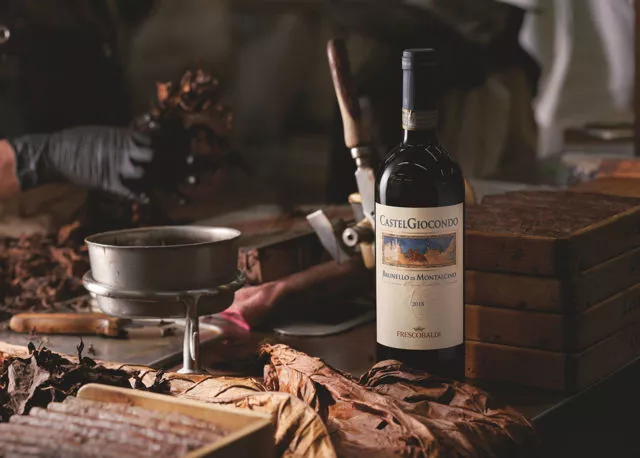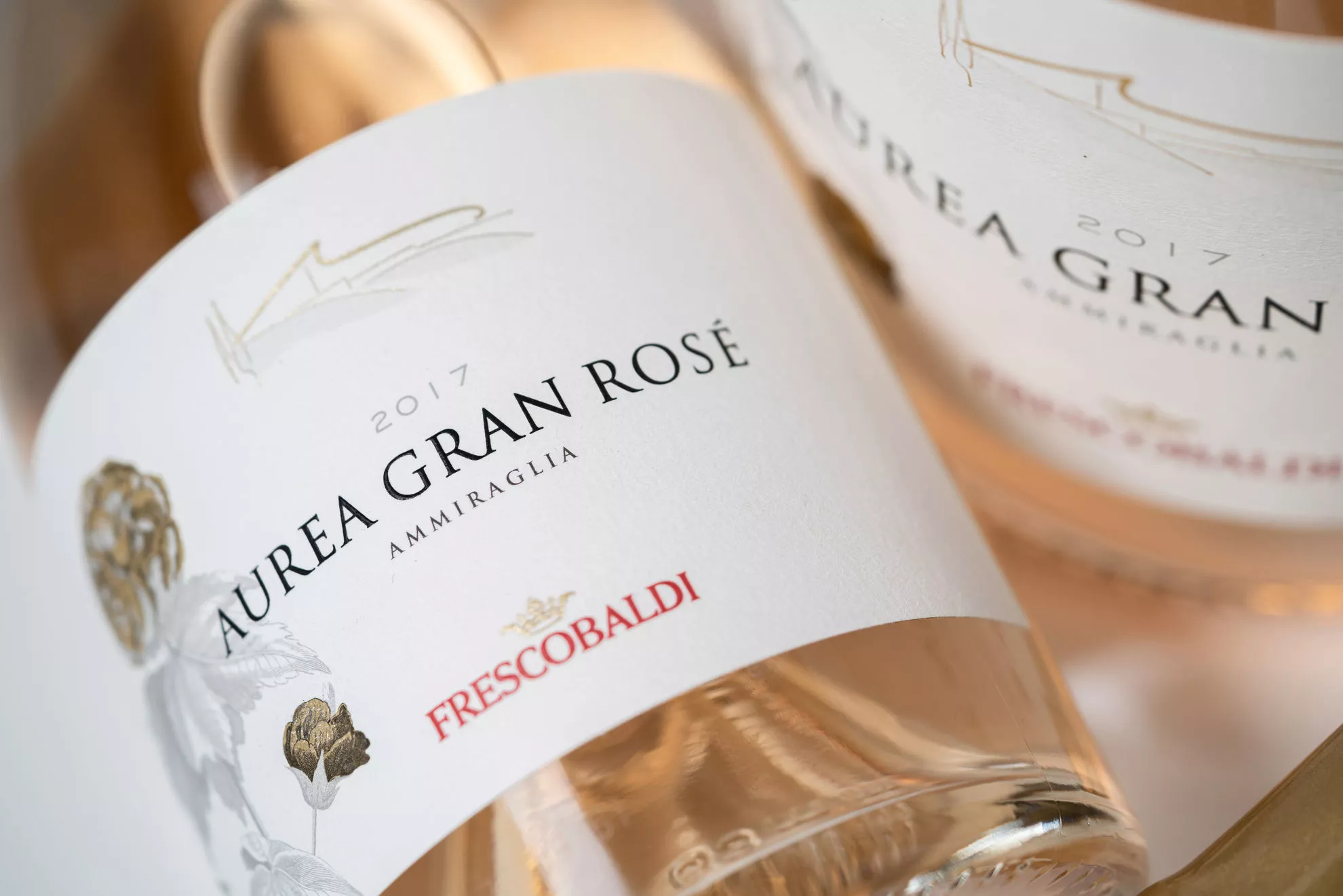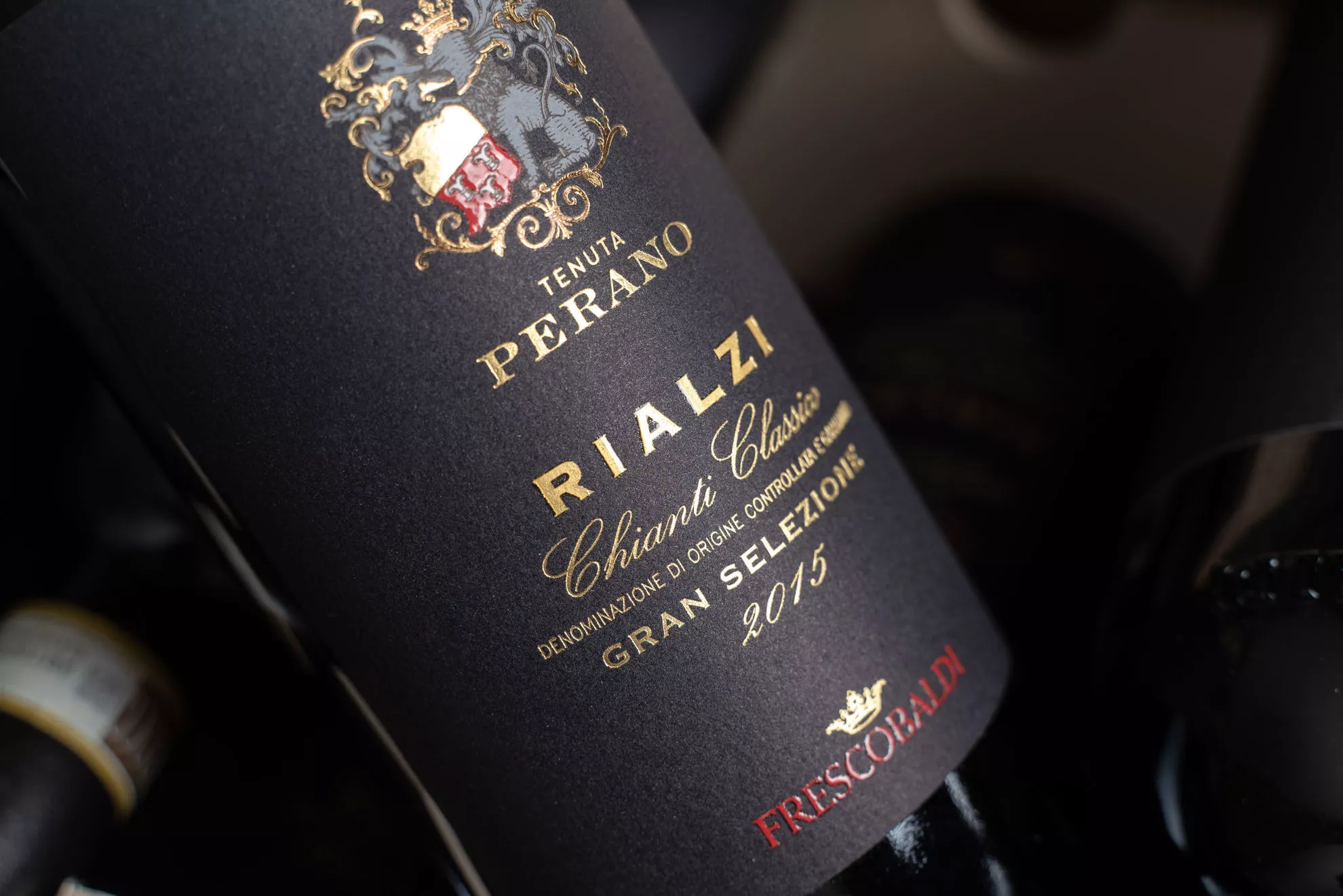
Journey among Frescobaldi Cru wines
The different connotations
When we find the word “cru" on a wine label, we know that it is an excellent wine. This French term is in fact used to indicate, in oenological language, a defined area where a single wine is produced. Or rather, as defined by the Vocabolario Treccani, “cru” is a “vineyard that is part of an area capable of producing wine with particularly valuable organoleptic characteristics.” (Source: Treccani)
Before getting too far into our journey among the Frescobaldi Cru wines, however, it is good to make a distinction between the meaning of Cru in France and in Italy.
Cru: Term's origins and meaning
Starting with the grammatical analysis, cru is the past participle of the verb “croître” used as a noun to mean “that which grows in a region”. On a semantic level, this three-letter word was then adopted throughout the wine world to indicate a particular vineyard cultivated in a specific area and from which a high quality wine is obtained.
Investigating further, it is possible to trace the ancient origins of this term, which was already used by the winemaking monks of Burgundy in reference to the best vineyards in their possession. In order to be more easily identified, these vineyards were delimited by walls and had a precise name, to which the term “cru” was added.
What defines a vineyard as a “cru" is therefore the terroir, composed of soil, climate and other factors, natural and otherwise, which give the wine produced there its unique characteristics that make it different from those of other wines, even if produced nearby.
From one part of France to another, however, the term cru takes on different connotations.
- In the Champagne region, for example, “mono-cru” wine indicates a wine made with grapes from a specific village
- In Alsace and Burgundy, however, wine made with a single cru is produced with grapes from a specific vineyard and from which it takes the name that is written on the label.
- Finally, in Bordeaux, the title is based on the producer and the fame and prestige he enjoys nationally and internationally (source: wineshop.it)
On the other hand, when we find Premier Cru or Grand Cru on some French wine labels, we know that this refers to a specific cru classification. For wines produced in the Medoc, the reference scale is that of 1855 as desired by Napoleon III, which included the Premiers Crus at the top, followed by Deuxièmes Crus, Troisièmes Crus, Quatrièmes Crus and Cinquièmes Crus.
This scale determines the quality of the wine in relation to the position of the vineyards in which the grapes used to produce it are grown. And it also defines the price. A wine made with grapes from a 100% value vineyard will carry a higher price than a 95% value one and so on. (Source: acinonobile.it)
On a general level, however, the meaning that the vignerons attribute to the word Cru is much broader and includes the entire balance of soil, microclimate, winemaking traditions and wine styles. This means that one Cru is different from another and even more, that it makes sense to identify them and designate them as different.
Speaking of Cru wine in France does not mean to refer only to a small and defined geographical area. Instead it includes a group of factors that create the differences between wines that come from that specific area.
Cru wines in Italy
In Italy, contrary to the other side of the Alps, there is no law that hierarchically classifies the micro-territories with regard to the quality of the vineyards. However, some specifications allow the use of additional geographical indications that refer to the micro-areas of grape cultivation.
This is how the Menzioni Geografiche Aggiuntive (or MGA) came into being. Today these are termed Unità Geografiche Aggiuntive and include particular indications on the label to differentiate specific production territories.
The first to use the “Italian Cru” was Barbaresco in 2007, closely followed by Barolo in 2010, which today has 181 Menzioni. However, it is not a qualitative pyramid, as are the French Crus - but only a geographical differentiation.
Prosecco Superiore di Valdobbiadene has also created its Rive, small plots of vineyards on a steep slope, where the best grapes are produced and which, in 2009, became actual Menzioni. There are 43 Rive in total: 12 take the name of the municipality in which they are located and 31 from the hamlet, and all represent the close link with the territory, characterized in each case by a particular terroir. (Source: gamberorosso.it)
However, the UGAs should not be confused with sub-zones, already in use by Chianti.
As stated in the Testo Unico del Vino:
(Source: https://www.aislombardia.it/viniplus/diritto-divino/conoscere-le-classificazioni-sottozone-e-unita-geografiche-aggiuntive.htm)
The sub-zone must be characterized by certain peculiarities and expressly provided for in the production specification. The Unità Geografiche Aggiuntive, on the other hand, have the function of indicating more precisely the place of production using geographical names, but without including production differences. The only note is that they must be included in special lists attached to the specifications and that the wine produced from these vineyards is vinified separately and specifically named in the annual grape production report.
The various Crus, therefore, are wines all produced in the same way, with the only difference being the geographical element that is added - for this reason we speak of Unità Geografiche Aggiuntive - to the Denomination in order to further narrow the territory of production.
For years, Chianti Classico has also been considering adding Unità Geografiche to its labels as a further differentiating element.


Frescobaldi's Cru wines
The Frescobaldi estates include vineyards which, due to their position, exposure, history or geography, have characteristics that make them unique and therefore noteworthy. This is where the special wines which have earned the designation Cru come to life. Let's see what they are.
Giramonte is the rarest and most exclusive Frescobaldi Cru. Produced since 1999 with the Merlot and Sangiovese grapes of Tenuta Castiglioni, the oldest of the Frescobaldi family, it is a wine of great intensity, rich, silky and with a very prolonged finish. Its uniqueness and excellence are conferred by the characteristics of the soil in the vineyards which is sandy and clayey, since until a few millennia ago it was covered by the sea. Also contributing is the ideal microclimate of this area and the exacting selection of the grapes during the harvest.
The 2017 vintage reveals a wonderful deep and decisive ruby red colour. The bouquet is extraordinarily complex, with an enveloping and intense ripe fruit. A moment later, sensations of liquorice, vanilla and star anise emerge; finally, the nose is seduced by toasted notes with a light smoky hint. Enveloping on the palate and giving way to soft, velvety sensations. Warm and rounded, it has intense fruity notes that return and a delicately spiced, fresh and elegant finish. The tannic texture is fine and dense.
Aurea Grand Rosé
Aurea Gran Rosé is instead the Cru Toscana IGT rosé emblem of the Ammiraglia estate, a perfect combination of sea and vineyards, Syrah and Vermentino, elegance and harmony of nature.
Aurea 2019 captivates with its grand elegance. It is a wine with bright nuances that recall pink gold and is crystalline and delicate. The bouquet is characterized by a marked intensity and complexity. A wine with depth, it is characterized by delicate notes of fresh fruit that recall pink grapefruit and then fade into sweeter hints of yellow peach. The palate is soft, velvety and mellow, with delicate spiced hints on the finish. Wonderful mineral notes give Aurea a unique character and lend persistence and depth on the palate.
Montesodi
Montesodi, a Cru of Chianti Rufina Riserva DOC, has also been added to the list. First made in 1974, the wine is produced only with the best vintages of Sangiovese grapes grown in the homonymous plot of land, located in the heart of the Tenuta Castello Nipozzano. This area, located at an altitude of 400 metres, has always been considered the best area on the estate for the cultivation of Sangiovese. And this is how a wine of extreme elegance and vivacity is born - intense, with great aromas and an aristocratic long persistence.
The 2017 vintage, in particular, shows its usual intense ruby red colour accompanied by purple hues, and this is only a hint at its surprising concentration and undisputed vigour. With a powerful and incontrovertible elegance on the nose, it presents a seductive sequence of floral character that is harmoniously accompanied by rich notes of ripe fruit, red fruit, black fruit and plum. These aromatic elements are elegantly joined by a sweet spiciness. The palate surprises for its density and harmony, for the great elegance and silkiness of the tannins that accompany the tasting to arrive at a persistent and pleasant finish.
Benefizio Riserva
Benefizio Riserva is the first white wine in Italy fermented and aged in barriques, must be mentioned.
With the 2019 harvest, Benefizio expressed itself, once again, with extreme elegance. Its bright straw-yellow colour with golden highlights is a prelude to a beautiful structure. The bouquet ranges from fruity, to flower, to spice to end with delicate tertiary notes. An initial hint of citrus, reminiscent of candied orange peel and pink grapefruit, blends with a tropical hint of pineapple. Secondary floral notes are reminiscent of acacia, mimosa and magnolia. Vanilla, cinnamon, toasted hazelnut and the pungent tingle of ginger develop with time. On the palate its indisputable elegance is confirmed and it reveals itself to be structured, creamy, savoury and with a solid and long finish.
Ripe al Convento
Among the Frescobaldi Crus there is also the Ripe al Convento, a Brunello di Montalcino Riserva DOCG made with Sangiovese grapes from the vineyard with the same name, located 450 metres above sea level, and characterized by shale and marly soils, with a southern exposure.
Ripe al Convento 2015 has a beautiful, intense and brilliant ruby red colour with delicate garnet reflections up front. On the nose, fruity notes open the dance: blueberry, cherry, sour cherry in spirits. In any case, the tertiary aromas created by the long maturation are the undisputed protagonists; these notes are perfectly balanced, with none overpowering the others. Cinnamon, tobacco, tea leaf, roasted coffee bean and finally a light note of leather are the main descriptors. The sensory journey finishes with elegant spiced hints of white pepper, clove and cinnamon. Mature and compact tannins are velvety and silky,gently caress the palate and are beautifully integrated into the matrix of the wine. A beautiful balance is created with the acid-alcoholic component. The extremely long finish further demonstrates the greatness of the vintage.
Rialzi
Rialzi Frescobaldi, a Chianti Classico Gran Selezione DOCG made with 100% Sangiovese grapes is characterized a strong and extremely elegant soul, vibrant but never exuberant.
The Rialzi 2016 reveals an intense and brilliant ruby red colour. The bouquet is complex and harmonious: hints of berries, violets and spices are the key descriptors; followed by toasted notes of coffee bean and tobacco which further strengthen the idea of a structured Sangiovese. On the palate it is marked by an incomparable richness and depth; its texture is dense, the soft and rounded tannins are perfectly integrated. Persistent and clear on the finish.
Lamaione
Lamaione can also be classified as a Cru wine.
The 2016 vintage of this Toscana IGT is a reflection of the season that produced it. It is characterized by a great balance between the parts and an unconventional, elegant freshness. The colour is an intense and impenetrable ruby red with purple highlights. On the nose the aromas and fragrances are at play. Fruit takes on a leading role, with blueberry that pervades and balances well with fresh balsamic and menthol notes. The fruit is perceived as not completely ripe, but with a nice crispness. On the palate it has a nice tannic attack. Alcohol and the freshness are perfectly balanced. Long and persistent finish.
Mormoreto
We close the journey through the Frescobaldi Crus with a red wine of centenary origins, the Mormoreto Toscana IGT, produced with Cabernet and Petit Verdot grapes. The ancestors of the Frescobaldi family were the first to plant these non-native vines at the Tenuta Castello Nipozzano, with the intention of producing a great wine. This legacy was then taken over by Leonardo Frescobaldi, who in 1983 created the Cru Mormoreto, a wine with a vibrant, deep and harmonious character. Since 2013 a small amount of Sangiovese has further emphasized its elegance, to recall the strong connection with territorial tradition.
info@frescobaldi.it |+39 055/27141